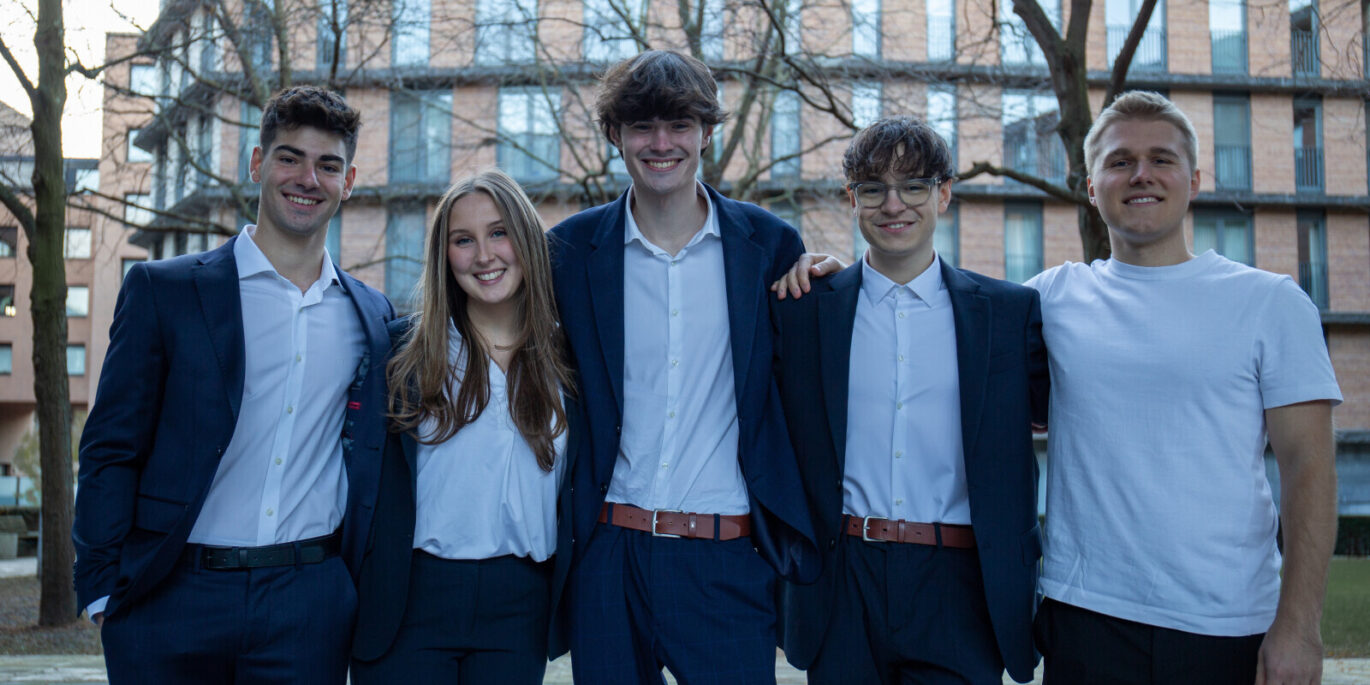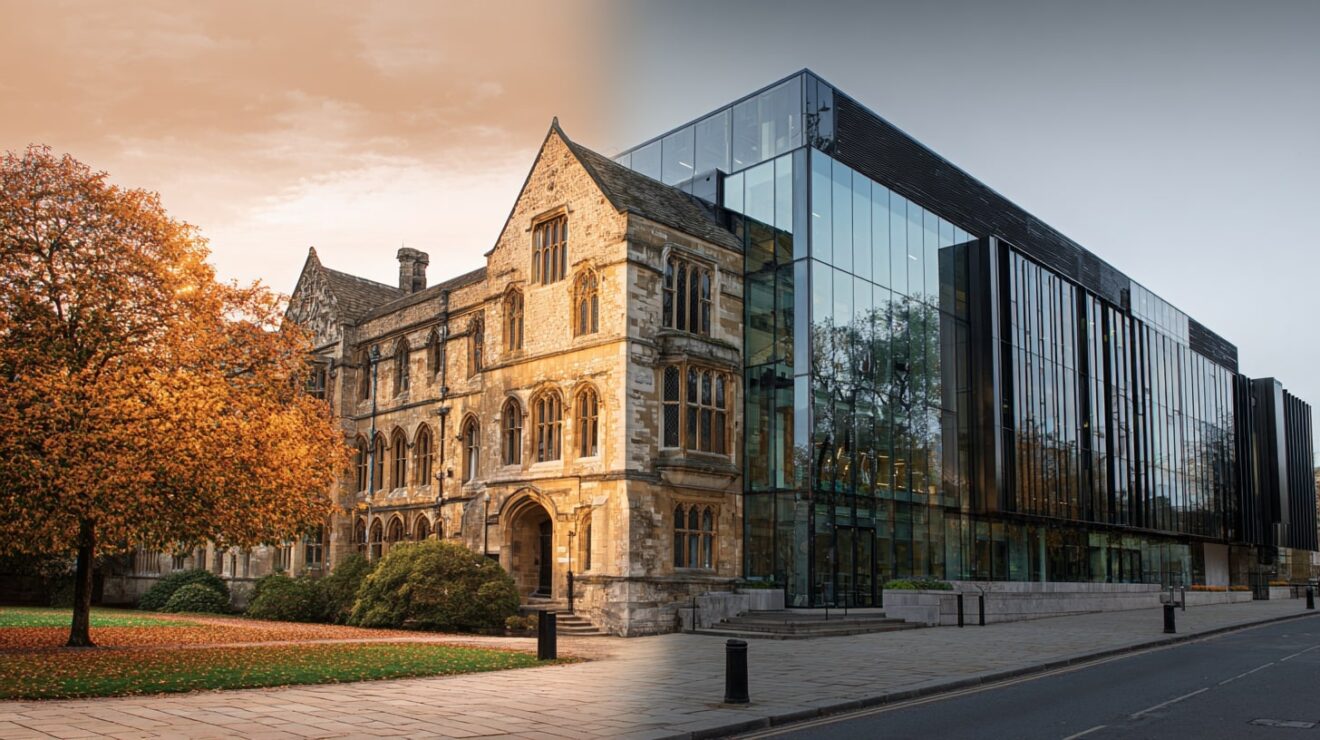One of the things that is supposed to set Students’ Unions apart from other benevolent interest groups is their democracy, which is supposed to ensure that students’ interests are met. But is this true?
Is it really ‘democratic’, or just garish popularity contests, painful processes and playground bullying masquerading as “accountability”? Can you become more representative whilst being less democratic? And are those of us advising Students’ Unions on their democracy mainly ex officers that won in a system that systematically shuts out the quiet, the thoughtful, the wise and the eccentric?
Drawing on my research from the voluntary sector, this piece explores notions of democracy and “interests” with a hope that it inspires new practices of democracy in students’ unions. I explore the ways in which students are supposed to be able to exert power and control over their union through democracy and governance, enabling them to drive organizational political and educational change.
Associational
In law, students’ unions are associations “of the generality of students at an establishment … whose principal purposes include promoting the general interests of its members as students”. They are also almost all self-styled democratic organisations, which are promoted as being led or run by students. In the past, this would manifest in two principal ways- through the election of a student leadership (both full time sabbatical and part time) and through student meetings (either a representative council, all student meeting or both) which would pass policy resolutions “mandating” that leadership and hold student leaders to account.
It is often suggested that the widespread decline of the latter set of arrangements was a result of students’ unions having to register formally as charities in 2010 when they lost their previous “exempt from registration” status. It is true to say that the creation of Boards (thanks largely to the mimetic adoption of an NUS Model Charity Constitution and associated urge to incorporate as companies) caused unions to adopt behaviours, practices and models more akin to the charity sector- including the controversial insertion of lay trustees- but models distributed at the time included General Meetings and councils. And in any case, the legitimacy of those structures had been under serious challenge for years.
Nick Berg’s classic article from the Association of Managers in Students’ Unions Journal in 2005 sums up the problem well-
[there is an] undermining of the legitimacy of UK Students’ Unions through the erosion of both the feeling of a shared student identity and the sense and reality of there being a student community”, and goes on to argue that “traditional” democratic structures would not suffice in the coming years. The argument was that these structures involved too few people and in an “activist” mode- where the complexities of the external environment and indeed the student body necessitated practice which could meaningfully represent that complexity.
As a result in the majority of universities, “old” structures designed to facilitate the democratic representation, determination and resolution of competing interests were largely swept away, replaced with polling, research and survey work. Even where the old structures survive, they are often inquorate and hardly drive organisational work or strategy. Trustee Boards have regularly (and often controversially) set aside decisions made by democratic bodies. Elections survive, but as popular interviews on motivation and skill rather than exercises in public discussion of issues and interests.
Even where students’ unions (and NUS) carry out reviews of democracy, they tend to focus on the parts where students vote- with stats on participation. But determining interests is like academic work- it requires research, debate, analysis and recommendation. Every year multiple SUs review the bit where the work gets collectively marked rather than trying to involve more students in the bit where it’s developed. It’s daft and will always result in a failure to involve all but the most confident and popular.
To explore these issues I undertook a research project into the decision making arrangements of four “non profit” organisations, all with “interests” at their heart- a general FE College, an HE students’ union, a homelessness charity and a national advocacy charity. The results were revealing.
The Literature
Agency Theory …
assumes that the owners of an enterprise (the principal) and those that manage it (the agent) will have different interests”, and “suggests that the primary role of company directors is one of ensuring managerial compliance…to ensure it acts in the shareholders’ best interests”[3]
As such the extent to which SU exec committees or boards fulfil the role of acting to ensure that agents act in the interests of principals is important. Of course, as Cornforth points out, in the voluntary sector:
there is much more potential ambiguity over who the principals or owners are…is it the founders, beneficiaries or members…and in the case of Public organisations, is it the general public, service users, taxpayers or the government itself”[4]
To test an SU’s effectiveness at determining, representing and resolving interests of the students, it is thus critical to examine matters such as
- the extent to which students are properly defined or understood;
- the extent to which (for a particular project, function or service) “students” permitted to change within the body’s aims or be fixed; and
- the extent to which there is conflict over the definition of “students” (as students), and how that is resolved.
Stakeholder theory has developed some of these concepts beyond owners or principals; it identifies groups which are stakeholders of an organisation, and recommends methods which can be used to serve the interests of those groups- traditionally through Board membership. Given the multiplicity of potential interests involved, this
leads to a political role for boards negotiating and resolving the potentially conflicting interests of different stakeholder groups”
Larger SUs have tended to view trustee boards as “non political” and indeed NUS’ governance arrangements have explicitly separated the political role of NEC/Conference and that of the board. Regardless, it seems to me that where boards or student executives are “resolving the potentially conflicting interests”, they are doing that for students, where previously at some attempt was made to ensure that students were able to do that collectively.
Much of the literature focusses on control and accountability, and as such has in its sights power, and its uses and abuses by leaders over their organisations or beneficiaries. A study carried out in 2007 by Guo and Musso takes as their start point the contention that non profit organisations contribute to the democratic ‘fabric’ of society by representing beneficiaries- they then examine the capacity of these organisations to represent, developing a framework of five dimensions split into two categories- Board Legitimacy and Board Capacity.
Within Guo and Musso’s Legitimacy category is a rehearsal of “mandate-independence” controversy faced by multiple student officers (especially on their University’s Board)- whether a representative should act under direct mandate of a constituency or merely act in what they consider to be the interests of those that put them there.
Guo and Musso then examine capacity to represent, in three ways.
- Formal describes the ways in which students might select leaders and how they may exercise power overt them.
- Descriptive assesses the extent to which leaders mirror characteristics of the student community.
- Participatory describes the ways in which students can be directly involved.
- Reviews of SU democracy might usefully examine all three of these capacity areas.
There is of course much literature on democracy and decision making that in and of itself is too vast to be considered properly here. However dipping into the specialist work on Trade Unions, Cooperatives and Public Management is useful for SUs given the parallels and linkages, some of it drawing usefully on concepts of Exit, Choice and Voice developed by Hirschman.
Trade Unions’ capacity has often been seen as determined by the tension between operations / capacity, and representativeness. Child, Loveridge and Warner identify this as being a critical tension when examining the capacity of union to do its job properly, and in doing so identify what they call “rationalities” for decision making.

Administrative rationality:
the logic of a goal-implementation or operational system… the design of an organisation in such a way that specified tasks or outcomes are attained with certainty or economy. These conditions appear in many instances to require a routinisation of operations, specialisation of functions, directness of communication, and speed in decision-making”.
Representative rationality:
a flexibility of operations to suit the needs of different membership groups located within different situations, a duplication of functions in order to build checks and balances into union control, a multiplicity of communications in order to allow maximum interchange…of opinion, and a holding back of decision-making until every viewpoint has been expressed” (Child, Loveridge and Warner 1973:78)
When this model was first used in NUS training in the early 2000’s, the assumption in tutors notes was that CEOs and managers were administrative leaders, with elected officers representative leaders. But given the longevity, expense and skill of the former (counter posed with the transience of the latter) are we at risk of leaving representation and interests to amateurs?
The critical lesson is to examine the nature of decision making itself in an SU. Even if it was possible to identify respective roles for student executives, boards and managers to make a particular decision, on what basis is that decision made? What perspectives are taken into account- and are they, for example, administrative or representative in nature?
Zimmerman and Dart’s examination of “commercialisation” in the not for profit sector argues that “governance” can become less “responsive to community needs and more concerned with issues such as productivity and accountability”, or “that they focus too much on output measures (e.g. are we serving more people than we were last year?) of effectiveness” and ignore other measures- such as which people it is best to serve.
Determining Student Interests
“Working out what the interests or needs of beneficiaries are, and who they are”
In my research, the different ways of understanding users, beneficiaries etc had a clear impact on the interests determination issue. In the homeless project, for example, the term in prevalent use was users (occasionally swapped for clients); and as such the only people under discussion or consideration were those actively using the project’s services at the time.
This is easily contrasted with the national advice/advocacy charity. Here the term “beneficiaries” was in constant use and given the major representative and campaigning role of the charity, a wider group of people (many not actually making any direct use of the services) were seen as benefitting from the charity’s work.
Yet in the students’ union, the language of “students”- and “members” being defined as all students- led to a wider set of considerations:
Yeah so because all students are members we have to think about all of them. We know that not all of them are going to join sports club but we’ve got better at understanding them all even if we accept that some of them will never immerse in our work. We have to strive to represent them all and involve some, if that makes sense” (SU CEO)
In this way SUs could draw a distinction between a group or individual’s interests in relation to a service (ie views on the opening hours of a helpline) and their interests more broadly (their hopes, fears or economic needs)
The understanding of the roles of bodies and individuals with the governance framework of each of the charities also had a clear impact. In the students’ union, the consideration of the interests of students was explicitly not a role of the board at all-
We do that through the elected exec and referendums. The Board just runs the organisation so that it can make all of that other political stuff happen” (President, HE SU)
In the FE College, one of the stated roles of the Board was to be responsive to the community and as such consider its needs. Yet although two student members were constitutionally required, their role was explicitly not to “represent” learners- and indeed their role was to consider organisational, not people interests:
Oh no, we used to have that but now we tell them clearly that they are not there as representatives- they have to work in the best interests of the college” (Chair, FE College)
 Yet in the national advice/advocacy charity, it was clear that there was a clear role for the Board in “interests”. One of the formal roles of the board was “to set the strategy of the organisation in response to, and informed by, input from surveys of and consultations with those we serve”. (Terms of Reference, national advice/advocacy charity)
Yet in the national advice/advocacy charity, it was clear that there was a clear role for the Board in “interests”. One of the formal roles of the board was “to set the strategy of the organisation in response to, and informed by, input from surveys of and consultations with those we serve”. (Terms of Reference, national advice/advocacy charity)
Thus in terms of role, two of the organisations under consideration indicated that the board itself should “handle” or “debate” what was in the interests of their beneficiaries (the FE College and the national advice/advocacy charity); in the students’ union and the homeless charity “interests” were defined by board role as “politics”, one negatively (homeless) and one positively but therefore in another part (Union Council/Referendums) of the governance of the charity (HE SU).
Given this students’ unions really ought to be clear about who, and when, has the role of discussing the “interests” of beneficiaries.
Representing Interests
“The ways in which the interests or needs of beneficiaries are presented to decision makers, and why whom”
In the HE SU there was a fascinating reflection on how to “find out” the interests of students and the role of governance in that:
Well yeah our Strategic Plan says we should be more evidence led. We have done that especially when we go to the University with asks or campaigns at the same time as dismantling the old Union Council which was just a bunch of hacks in a room… I suppose you could say we have become more representative by being less democratic, yes, and I’m not sure what I feel about that” (President, HE SU)
In three of the charities beneficiaries made up a small number of members of the board; yet their role and then performance in representing interests was either confused or refuted. In the FE College student members were specifically briefed not to represent student interests (but to consider issues from a “student perspective”); similarly in the National advocacy charity; in the HE SU the elected students were there to “represent students” but in other settings than the trustee board itself. Officer reports were not about meeting student interests but duties within a role. This all seemed at odds to the rhetoric on user involvement promoted in education or the Third Sector on user involvement.
There are key tensions, both in theory and practice, in user involvement and the extent to which it is possible or desirable for users themselves to “represent” their group’s interests inside the governance of a charity. Students’ unions should be clear about where and how this is to be done, and consider how they are represented- by people or research (or the mix between the two).
Resolving Interests
“The ways in which competing interests or needs of beneficiaries are presented by decision makers, and paths of action taken”
None of the organisations’ Boards believed they or considered that they might have a role in resolving competing interests- save that the HE SU recognised that this was a role for other parts of the organisation’s Governance. Yet in practice in each of the charities examined there was some evidence of competing interests being resolved by the board itself.
In the national advice/advocacy charity, for example one meeting had received the organisation’s impact report, the minutes revealing that there had been some impromptu debate on the expenditure balance between services for beneficiaries and spend on national campaigns and influencing work, with questions raised as to the relative impact. Whilst interesting, there was no evidence that the board itself had real tools for evaluating these concepts properly.
In the homeless charity example, the organisation was operating in a monopsony; there was one major local funder that issued grants to projects across the area. In this way the organisation legitimately did not feel the need to examine all of the homeless people in the area and their needs- they just competed for funding, and thus the responsibility to do the wider interests work was that of the funder.
In the FE College, on the other hand, the organisation was a monopoly provider of vocational, tertiary education in the area. Yet it still behaved like the homeless charity- assessing itself as if it was competing for funding and examining mainly the views of existing learners on its own services. This approach meant that the monopoly provider of vocational, tertiary education in the area was not conscious at all of any gaps in its provision- almost certainly meaning that some of the interests of some of the people would go unmet.
Given students’ union activity can both represent a monopsony and a monopoly, the position of an SU in relation to the funders and other organisations in an area or field the SU is in is critical in determining the appropriate method for interests resolution by the organisation. And when students take on the resolution of competing interests, they need the appropriate evaluative tools to do so.
Accountability
In my research I also identified a typology of accountability. Traditional charities that are not “owned” by their beneficiaries do not necessarily have to demonstrate that they are accountable to a set of beneficiaries. But the idea of democratic accountability to students in our context is surely in part a method for demonstrating that their interests or needs are being met:
Market Accountability
Within the college there was a clear sense that if people were coming in through the door it must be good. Success or failure was judged in these terms, proving “popularity”, but screening out diversity or need. In the HE SU, shots of vodka at 50p were providing good results under market accountability, but the players dissembled when challenged on whether this was really in students’ interests.
Survey Accountability
The National Advocacy/Information Charity had a wealth of surveys on user satisfaction to point to. These, it was argued, had the advantage of providing “scientific” results (as opposed to their old Governance model that had prized participation in a council), but it only proved how well the questions were framed- and then only measured the notoriously difficult notion of “satisfaction”. Questions of who was completing them, what their wider “interests” were, or what non users might need or think, vanished from view.
Scrutiny Accountability
In the National Advocacy/Information Charity, a small group of users were selected to carefully scrutinise aspects of the CEO’s work and then declared the result. This was also done in the HE SU in a similar way with Officer Scrutiny Panels. But in both cases this was focussed on individual performance rather than interests- and seemed only to serve to validate broader decisions on strategy- there was no sense (or evidence) that it might cause a rethink in strategy or service provision.
It is clear then that more explicit or sophisticated ways of doing accountability are probably needed, with a clear sense inside SUs of who services, officers or projects are accountable to as well as what a student officer, executive or board is accountable for.
Money
During the research I reflected on the role of money and funding in the interests question. In each of the organisations that were examined, there was always the survival of the organisation to consider for leaders- money was viewed as important by all four of the organisations.
This leads to two issues how an organisation attracts that funding, and the interests that the funders are prepared to see their funds put to.
In the HE SU, there were only really two forms of income. The first was block grant funding from the parent university. The CEO of the union remarked that the institution (under the auspices of concerns about public money) was increasingly seeking to control the ways in which their money is spent:
It used to be just a straight grant. But these days the money comes with lots of strings- we agree a set of priorities every year… This hasn’t been very restrictive because the money has been going up each time but if the money was cut I could imagine us falling out [with the university] over priorities”
Some of that was about compliance- a restriction that guaranteed students’ “freedom from” harm; or a restriction on the union’s “freedom to” carry out activity. These compliance “strings” on funding represented a restriction on the union’s activity and thus a narrowing of what can be determined to be in students’ interests.
Money can also control what is “in the interests of beneficiaries” in other ways.
The homeless charity naturally felt the need, especially when seeking block or grant funding, to frame their calls for funding within the objectives of the local authority or some other funder. This firstly meant that the need to do “partnership building” inevitably saw the organisation behaving less oppositionally than they might have if they were not in hock to the body for money.
But more importantly it means that interests — or at least the range of interests from which an organisation could choose to prioritise- are determined by another institutional definition or subset. Sometimes only where the two collide- and a deal of time was invested by all four in achieving alignment- was funding released. It certainly seemed to be true to say that a great number of potential beneficiaries of all four charities have a great number of interests that are not met or considered by the organisations either because compliance prevented it, or because wider institutions would never fund it. So a considerable extent, the “interests” were defined not by the charities themselves, but by the law, moral perceptions and by wider funding bodies’ processes. “Employability” is an area being funded right now in SUs. It is doubtless in students’ interests (and is coincidentally in HEI interests given the Teaching Excellence Framework)- but I don’t see much funding going into SUs to inform students of their rights over education under consumer law.
In the HE SU, the other major source of funding was through customers of its bars and shops operation- with a “profit recycled into action” argument. But there again there was a difficulty. These are interesting charities because this “mutual trading” is seen as being within the objects of the charity. But those interests are usually only met when the service is profitable:
Well of course we used to prop up badly run and managed services on the basis of assuming that it was providing a service. It wasn’t really so we closed many of the bars and the club” (CEO, HE SU)
In this sense, the overall profitability of those services determine what the “interests” of those students are then promoted as in that charity. Similarly, to “attract” that funding (ie the surplus) that students’ union had to court and attract its customers. That led to a disproportionate focus on those members likely also to be customers- full time, middle class undergraduates.
Conclusion
It is a well understood phenomenon that the boundaries between the public, voluntary and private sectors are less clear than ever. Much of that centres on the extent to which private interests are being met, either at the direct expense of public interests or as a matter of comparison with those of “ordinary people”. But outside of the news headlines, large swathes of public services are now delivered through organisations whose meetings structures and leaders have been given the task- sometimes explicitly, sometimes implicitly- of determining, representing and resolving that which is in the interests of people such that those interests can be served.
Democracy appears to offer the prospect of a focus on students’ interests being central to decision making and strategy. Yet across the student movement and wider voluntary sector, the extent to which participation by users results in their interests being identified or met is in my view under researched and over assumed.
There is little doubt that all four of the organisations examined have adopted a governance culture which does not satisfactorily identify or resolve conflicts between the interests of its beneficiaries or potential beneficiaries. The concept, process, methodology and behaviours required to get this right all need further research, focus and work from national bodies previously focussed on providing advice on administrative matters- fiduciary, legal and management capability.
The concept, process, methodology and behaviours required to get this right- getting SU democratic and governance arrangements to behave in the legitimate interests of the students their organisations serve- all need further research, focus and work; and they need managers and CEOs and national bodies that have until now focussed on fiduciary, legal and management capability to change the way we think and alter the value we are perceived to bring. It’s time for staff in the student movement to stop lauding ourselves simply as technocratic “grown ups” that can run things efficiently and know the law, whilst the amateurs sort the interests of beneficiaries and the fledgling democracy.
The good news is that for all the messiness of elections and referendums and union council meetings, students’ unions represent a great place to start for rebuilding democracy in the public realm, so we should crack on with it.


















